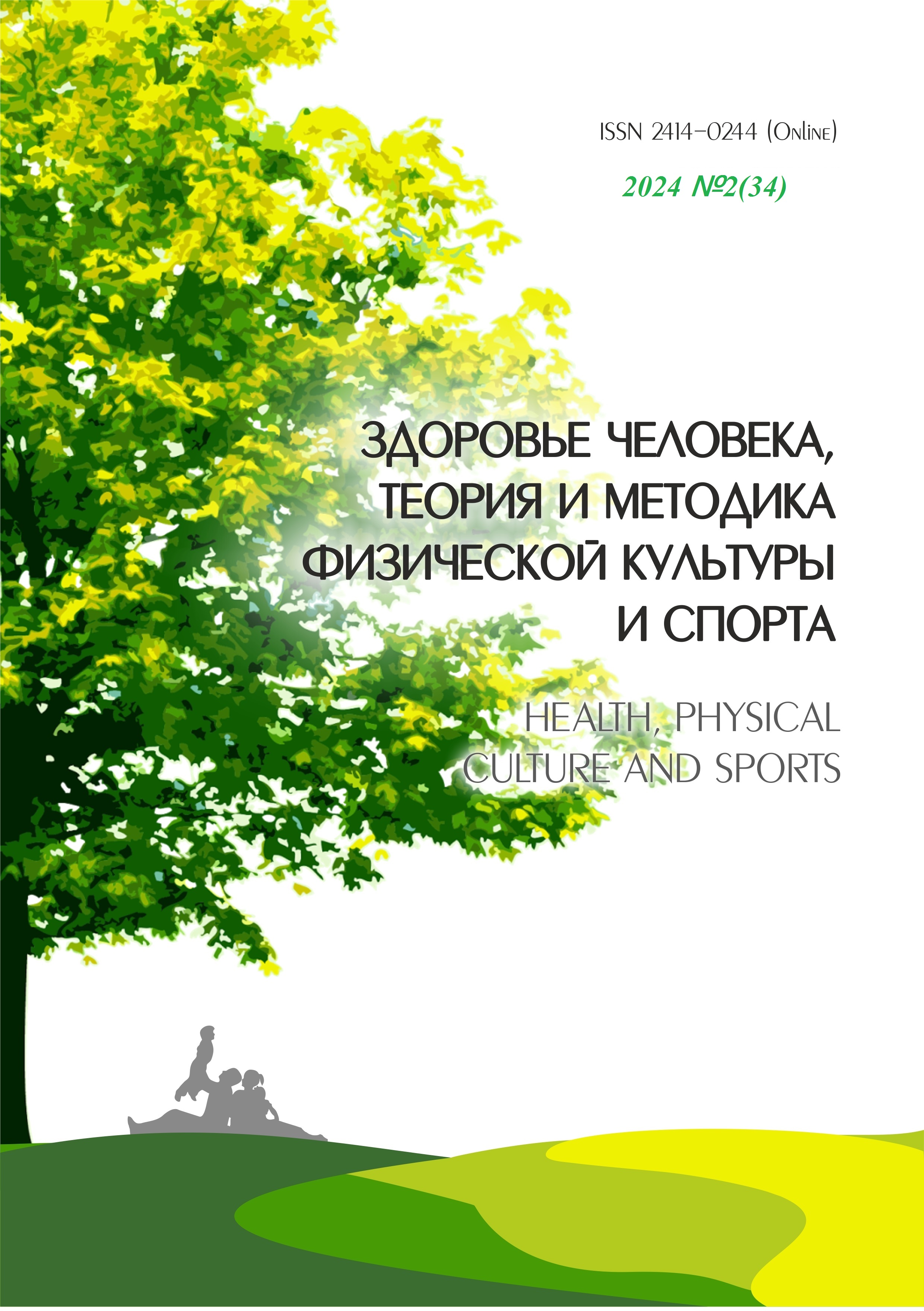MONITORING THE COMPONENT COMPOSITION OF THE BODY OF FEMALE ATHLETES PLAYING MINIFOOTBALL
Abstract
Bioimpedance analysis in dynamics allows you to evaluate the effectiveness and adjust the direction of the training process, predict changes in physical performance and competently provide nutritional and metabolic support. The study involved female students of the Ural State University of Physical Culture, who play minifootball, with 8 years of sports experience. Diagnosis was carried out twice in June 2022 and June 2023. Purpose of the study: to implement monitoring of the component composition of female athletes using the bioimpedance measurement method who are involved in futsal under the auspices of the Russian Student Sports Union (RSSU). Methods. Diagnostics were carried out using a basic multi-frequency portable body composition analyzer ACCUNIQ BC300 (SELVAS Healthcare Inc., Daejeon, South Korea) in the morning on an empty stomach, with preliminary preparation for the research procedure. Results. Initially, it was established that the anthropometric data of minifootball players, taking into account gender, age, and the specifics of the sport, corresponded to the reference values. Hydration status, indicators of protein and mineral metabolism, percentage of fat and lean body mass, within the reference range. It has been established that among female soccer players the values of active cell mass and skeletal muscle mass are in the lower limits of the reference values. According to the monitoring, a conclusion was made about the formation of a food pattern with dominance of carbohydrates and fats in the basic diet, and a lack of protein, as evidenced by low skeletal muscle values and segmental analysis of lean mass.
Downloads
References
Выборная К.В., Раджабкадиев Р.М., Семенов М.М., Соколов А.И. Состав тела и тип телосложения футболистов: сравнение результатов антропометрии и биоимпедансометрии // Актуальные проблемы физической культуры, спорта и туризма: XV Международная научно-практическая конференция, 14-15 мая 2021 г. Уфа: ФГБОУ ВО «Уфимский государственный авиационный технический университет», 2021. С. 135.
Гайворонский И.В., Ничипорук Г.И., Гайворонский, И.Н., Ничипорук Н.Г. «Биоимпедансометрия как метод оценки компонентного состава тела человека (обзор литературы)» // Вестник Санкт-Петербургского университета. Медицина. 2017. №4. С. 365–384.
Николаев В.Т. Сравнительный анализ показателей биоимпедансометрии хоккеистов и футболистов // Современные спортивные технологии: Материалы ΙΙΙ Межрегиональной научно-практической конференции, 23 апреля 2015 г. Йошкар-Ола: ГБПОУ Республики Марий Эл «Училище олимпийского резерва», 2015. С. 12–19.
Олешкевич А.С. Анализ адаптационных изменений организма спортсменов на основе биоимпедансометрии // Современные проблемы медицины и естественных наук: Сборник статей Международной научной конференции, 25-29 апреля 2016 г. Йошкар-Ола: Марийский государственный университет, 2016. С. 151–153.
Соколов С.С. Характеристика состава тела девушек, занимающихся мини-футболом на этапе высшего спортивного мастерства // Физическое воспитание и спортивная тренировка. 2017. № 1. С. 74–79.
Physical education of girls from different somatotypes and health groups / M. Kolokoltsev, L. Kuznetsova, V. Makeeva [et al.] // Journal of Physical Education and Sport. – 2021. – Vol. 21, No. 2. – P. 852-859. – DOI 10.7752/jpes.2021.02106.
Girls with “different volumes and intensity of physical activity constitution types”: A comparative analysis / M. Kolokoltsev, A. Vorozheikin, E. Romanova [et al.] // Journal of Physical Education and Sport. – 2021. – Vol. 21, No. 3. – P. 1436-1443. – DOI 10.7752/jpes.2021.03183.
Physical activity and metabolism of girls with different somatotypes / E. Romanova, M. Kolokoltsev, A. Vorozheikin [et al.] // Journal of Physical Education and Sport. – 2022. – Vol. 22, No. 4. – P. 900-906. – DOI 10.7752/jpes.2022.04114.
Rudnev S. G., Starunova O.A., Godina E.Z., Ivanova A.E., Zubko A.V., Starodubov V.I. The Russian Bioimpedance Database: An Update. J Electr Bioimpedance. 2022. № 13 (1). P. 66–72.
Copyright (c) 2024 Health, physical culture and sports

This work is licensed under a Creative Commons Attribution-NonCommercial 4.0 International License.
An author should not normally publish manuscripts describing essentially the same research in multiple journals or publication venues. Such redundant publication is generally considered to constitute unethical publishing behavior, and if discovered may result in a manuscript under consideration being rejected, or a published article being retracted.
Authors of manuscripts reporting on original research should present an accurate account of the work performed, accompanied by an objective discussion of its significance. Underlying data should be represented accurately in the manuscript. The manuscript should contain sufficient detail and references to permit others to replicate the work. The fabrication of results and the making of fraudulent or knowingly inaccurate statements constitute unethical behavior and may be cause for rejection or retraction of a manuscript or published article.





